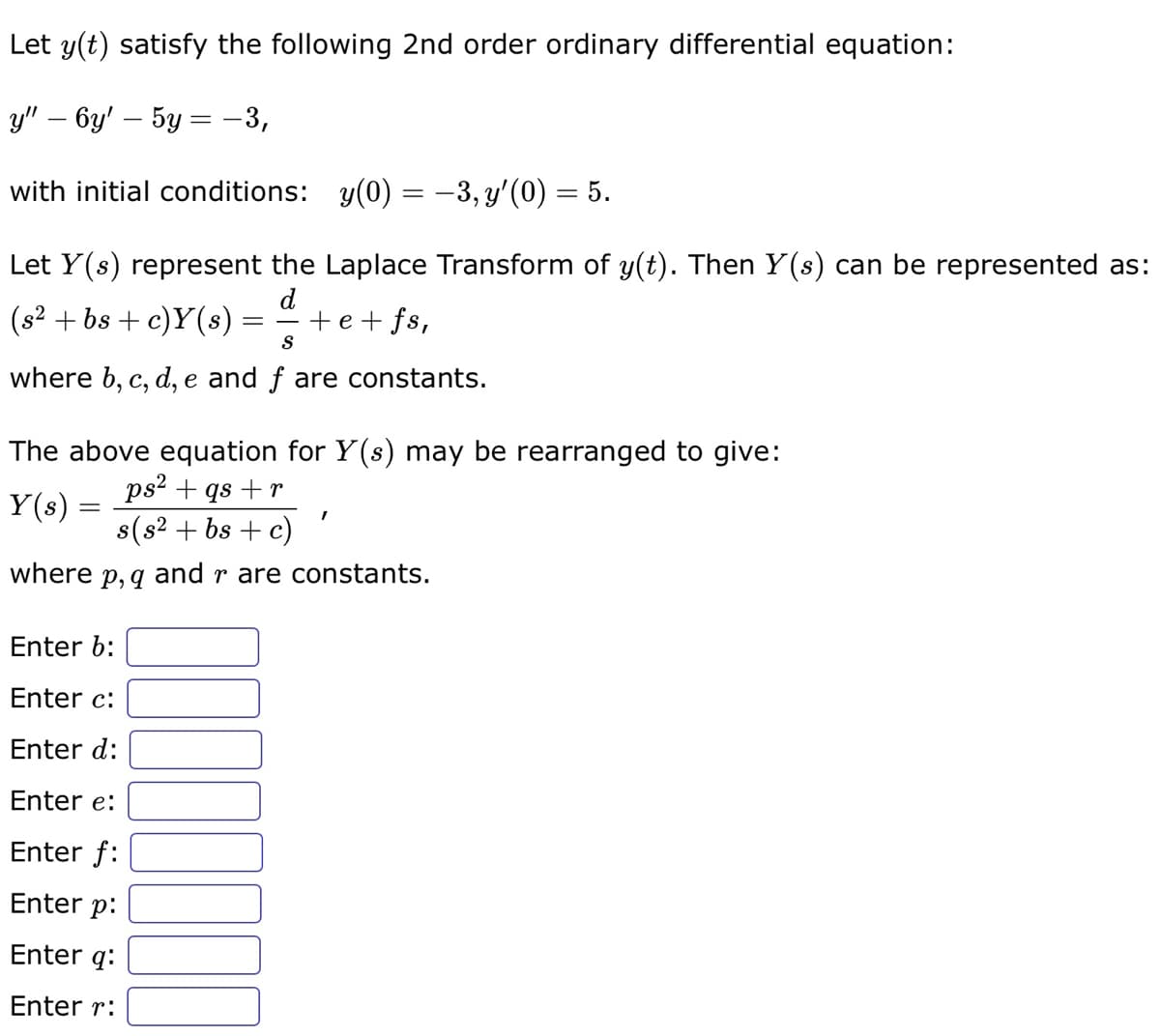Let y(t) satisfy the following 2nd order ordinary differential equation: y" — 6y' — 5y = −3, with initial conditions: y(0) = −3, y'(0) = 5. Let Y(s) represent the Laplace Transform of y(t). Then Y(s) can be represented as: d (s² + bs + c)Y(s) +e+fs, S where b, c, d, e and f are constants. —— The above equation for Y(s) may be rearranged to give: ps² + qs + r Y(s) = s(s² + bs + c) where p, q and r are constants. Enter b: Enter c: Enter d: Enter e: Enter f: Enter p: Enter q: Enter r: 0000 I
Let y(t) satisfy the following 2nd order ordinary differential equation: y" — 6y' — 5y = −3, with initial conditions: y(0) = −3, y'(0) = 5. Let Y(s) represent the Laplace Transform of y(t). Then Y(s) can be represented as: d (s² + bs + c)Y(s) +e+fs, S where b, c, d, e and f are constants. —— The above equation for Y(s) may be rearranged to give: ps² + qs + r Y(s) = s(s² + bs + c) where p, q and r are constants. Enter b: Enter c: Enter d: Enter e: Enter f: Enter p: Enter q: Enter r: 0000 I
Linear Algebra: A Modern Introduction
4th Edition
ISBN:9781285463247
Author:David Poole
Publisher:David Poole
Chapter4: Eigenvalues And Eigenvectors
Section4.6: Applications And The Perron-frobenius Theorem
Problem 69EQ: Let x=x(t) be a twice-differentiable function and consider the second order differential equation...
Related questions
Question
Please I want the answer

Transcribed Image Text:Let y(t) satisfy the following 2nd order ordinary differential equation:
y" - 6y' - 5y = −3,
with initial conditions: y(0) = −3, y'(0) = 5.
Let Y(s) represent the Laplace Transform of y(t). Then Y(s) can be represented as:
d
(s² +bs + c)Y(s)
+e+fs,
S
where b, c, d, e and f are constants.
=
The above equation for Y(s) may be rearranged to give:
ps² + qs + r
Y(s) =
s(s² + bs + c)
where p, q and r are constants.
Enter b:
Enter c:
Enter d:
Enter e:
Enter f:
Enter p:
Enter q:
Enter r:
I
Expert Solution
This question has been solved!
Explore an expertly crafted, step-by-step solution for a thorough understanding of key concepts.
Step by step
Solved in 2 steps

Recommended textbooks for you

Linear Algebra: A Modern Introduction
Algebra
ISBN:
9781285463247
Author:
David Poole
Publisher:
Cengage Learning

Linear Algebra: A Modern Introduction
Algebra
ISBN:
9781285463247
Author:
David Poole
Publisher:
Cengage Learning